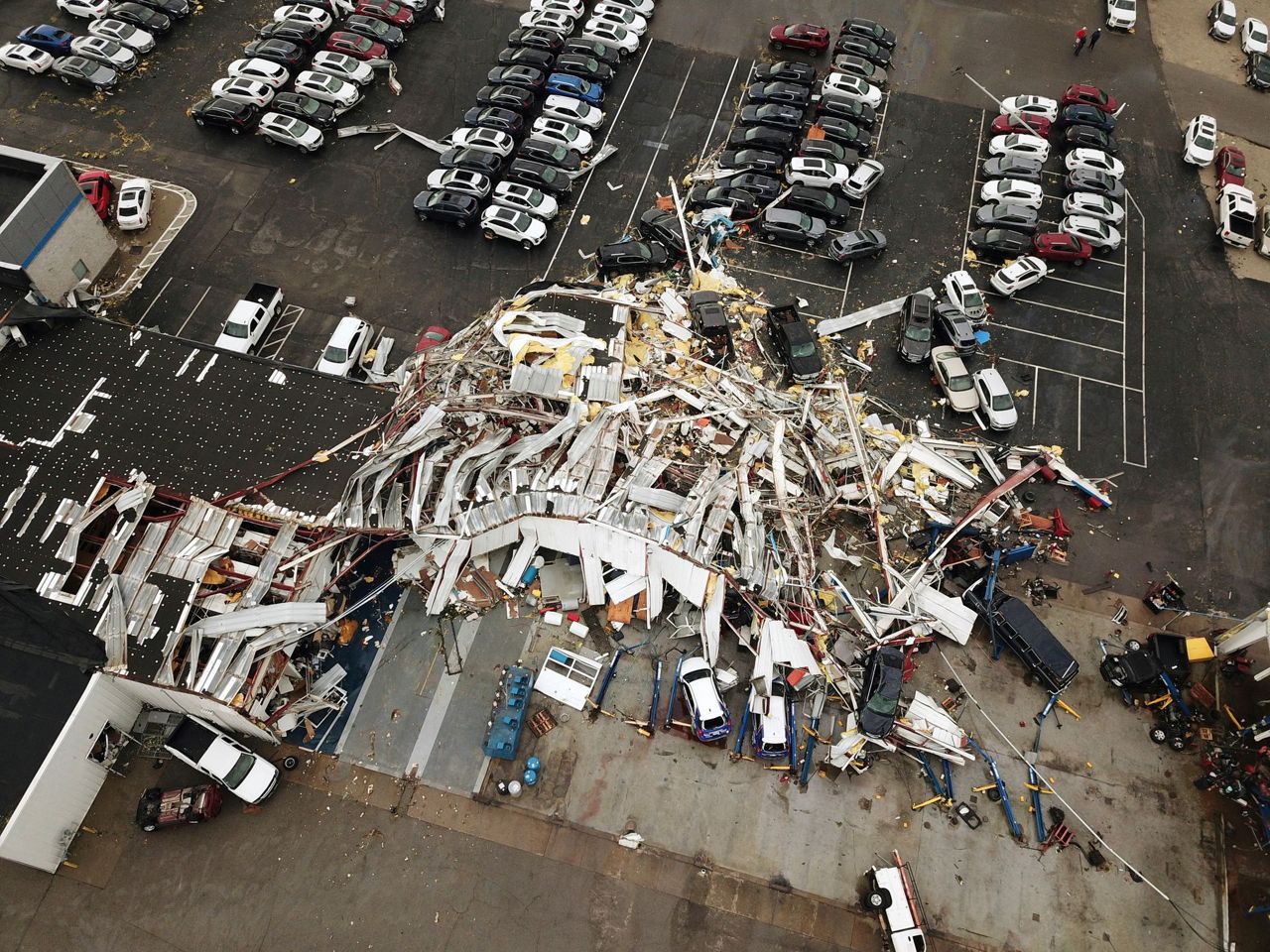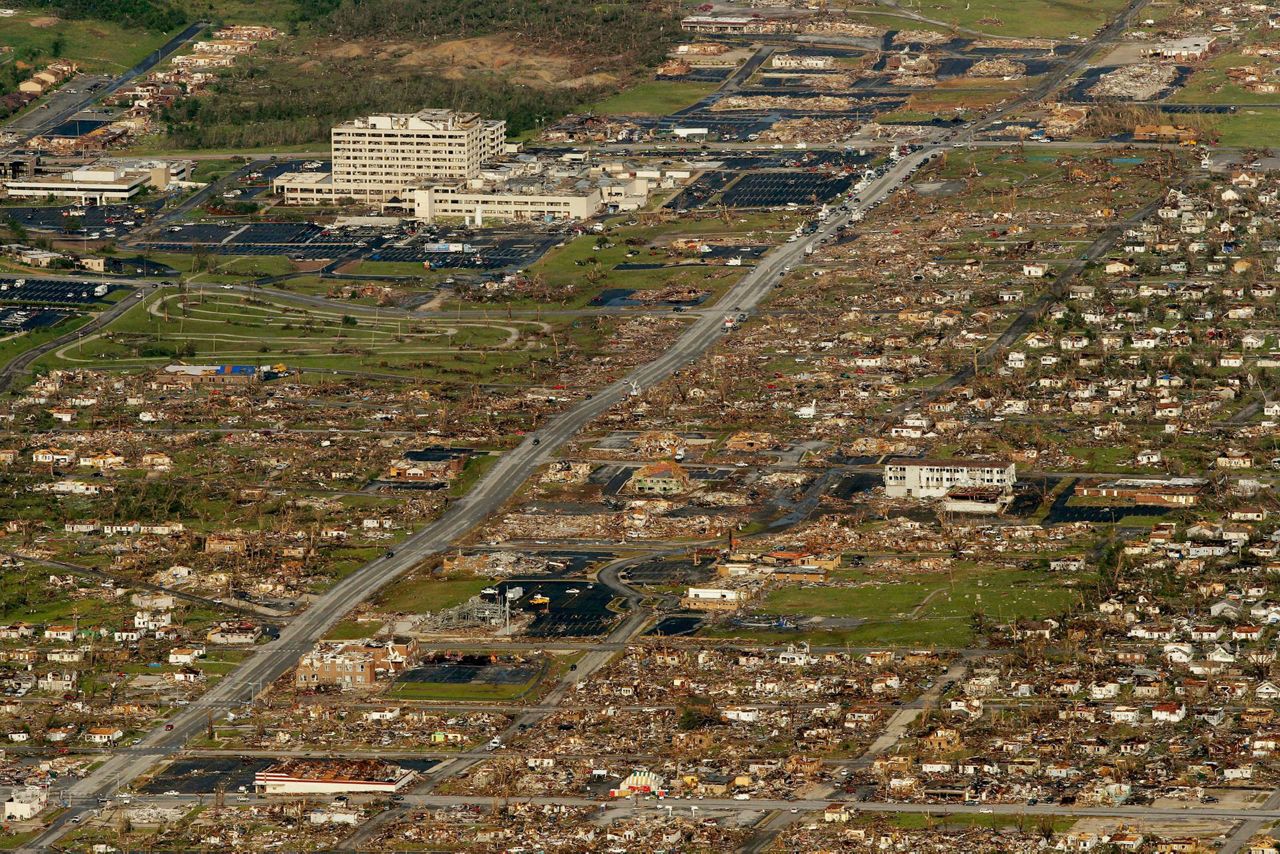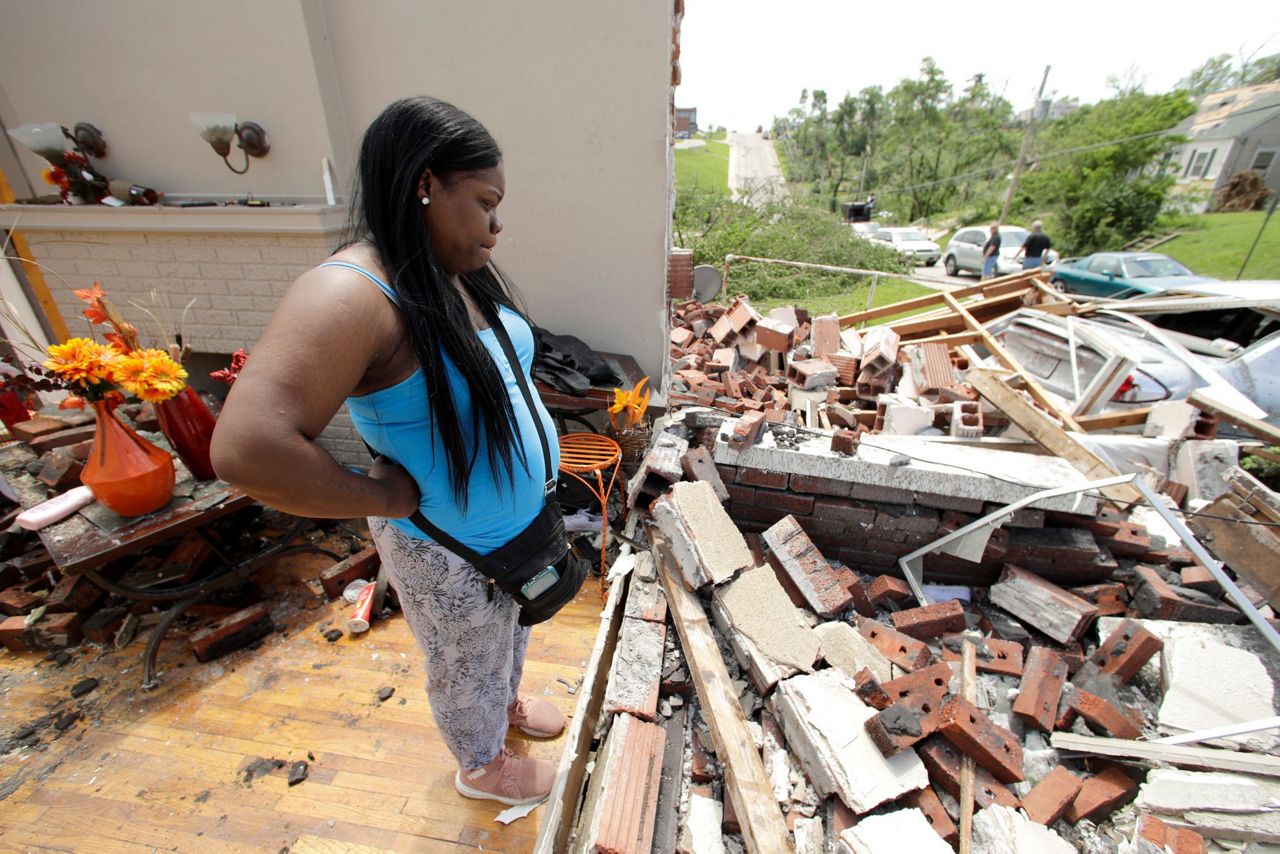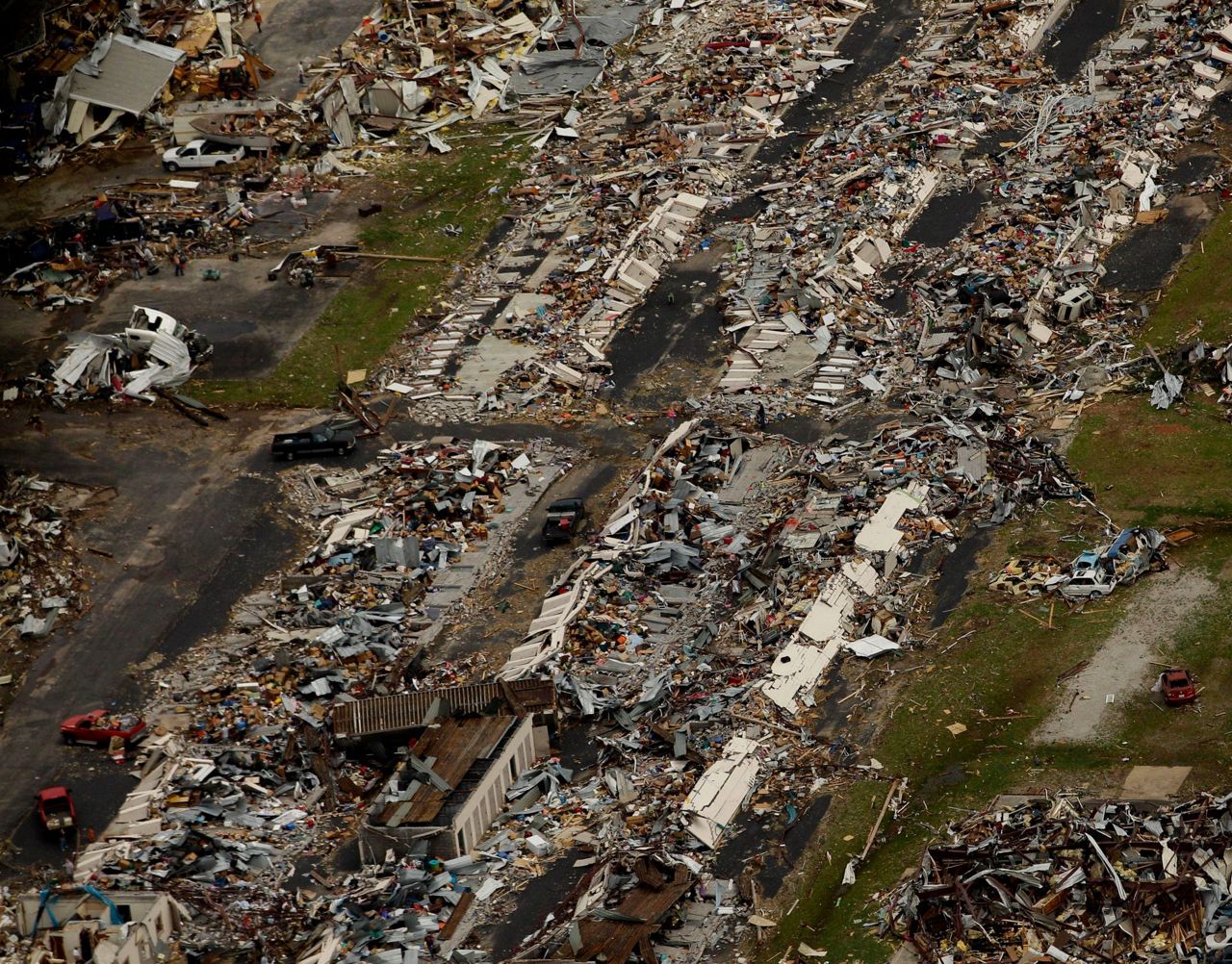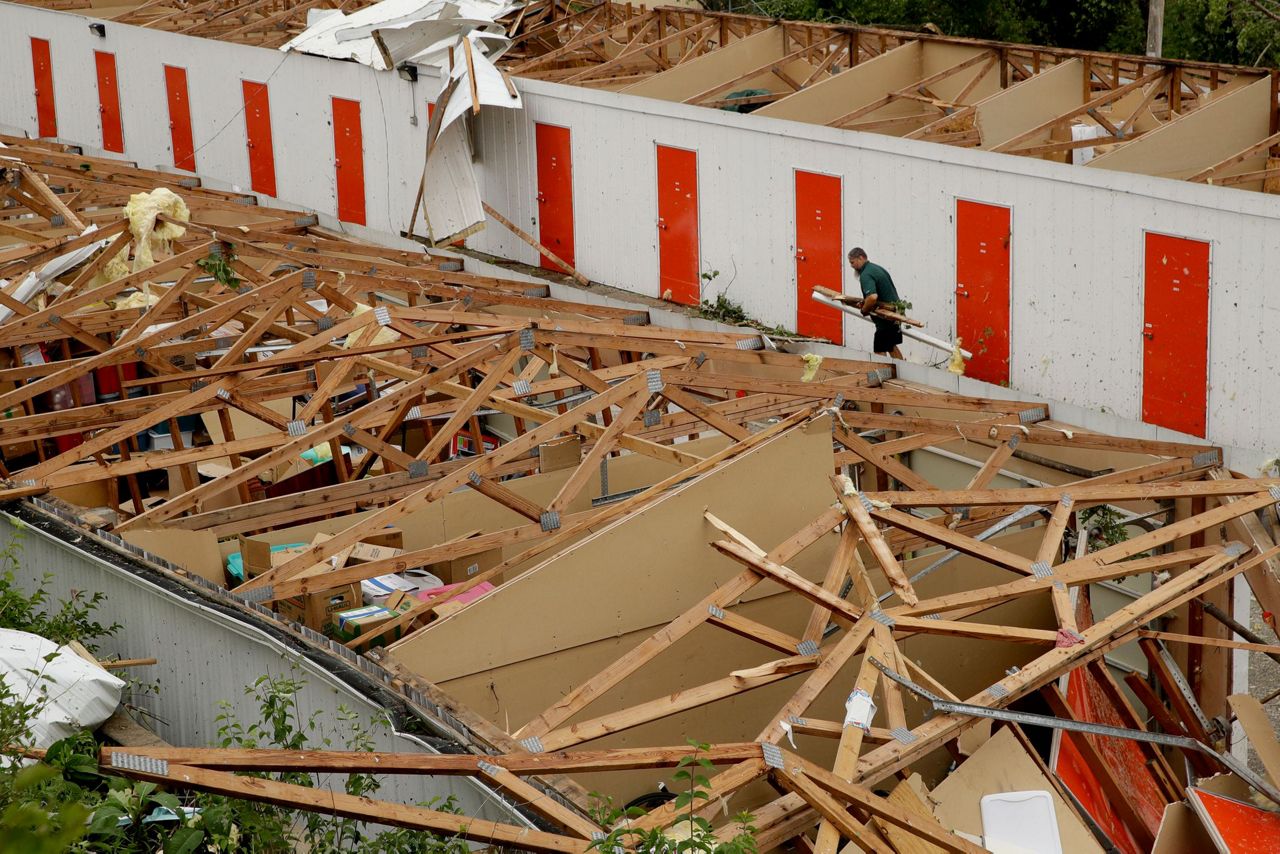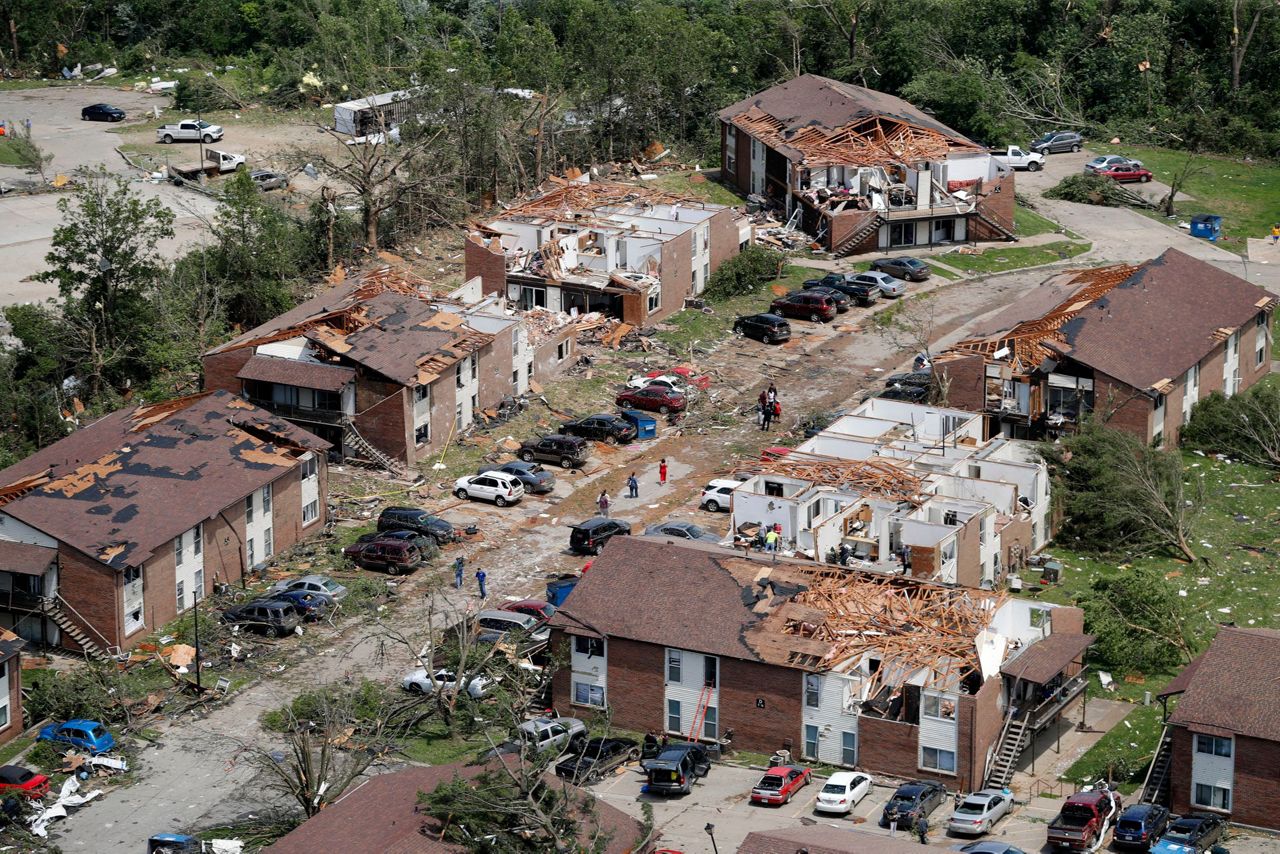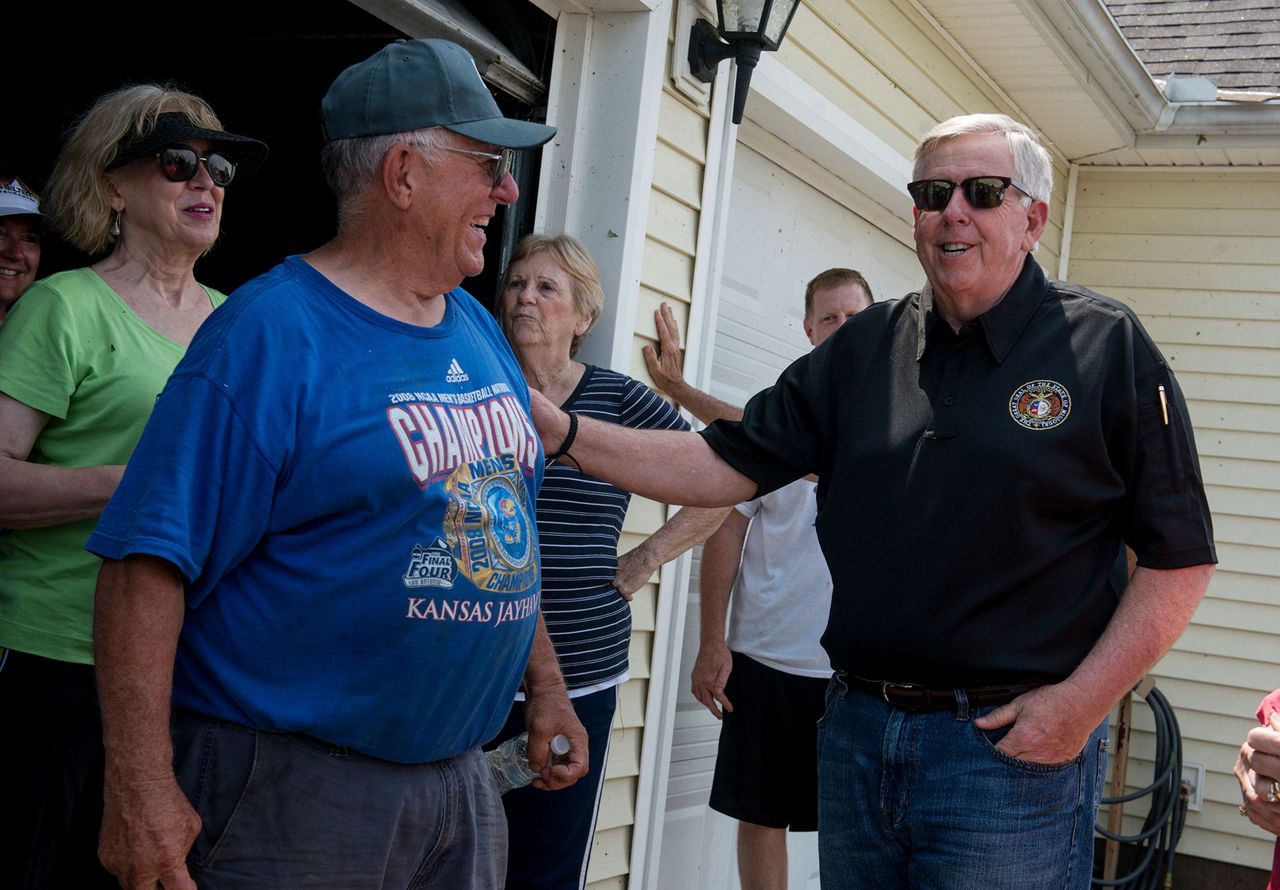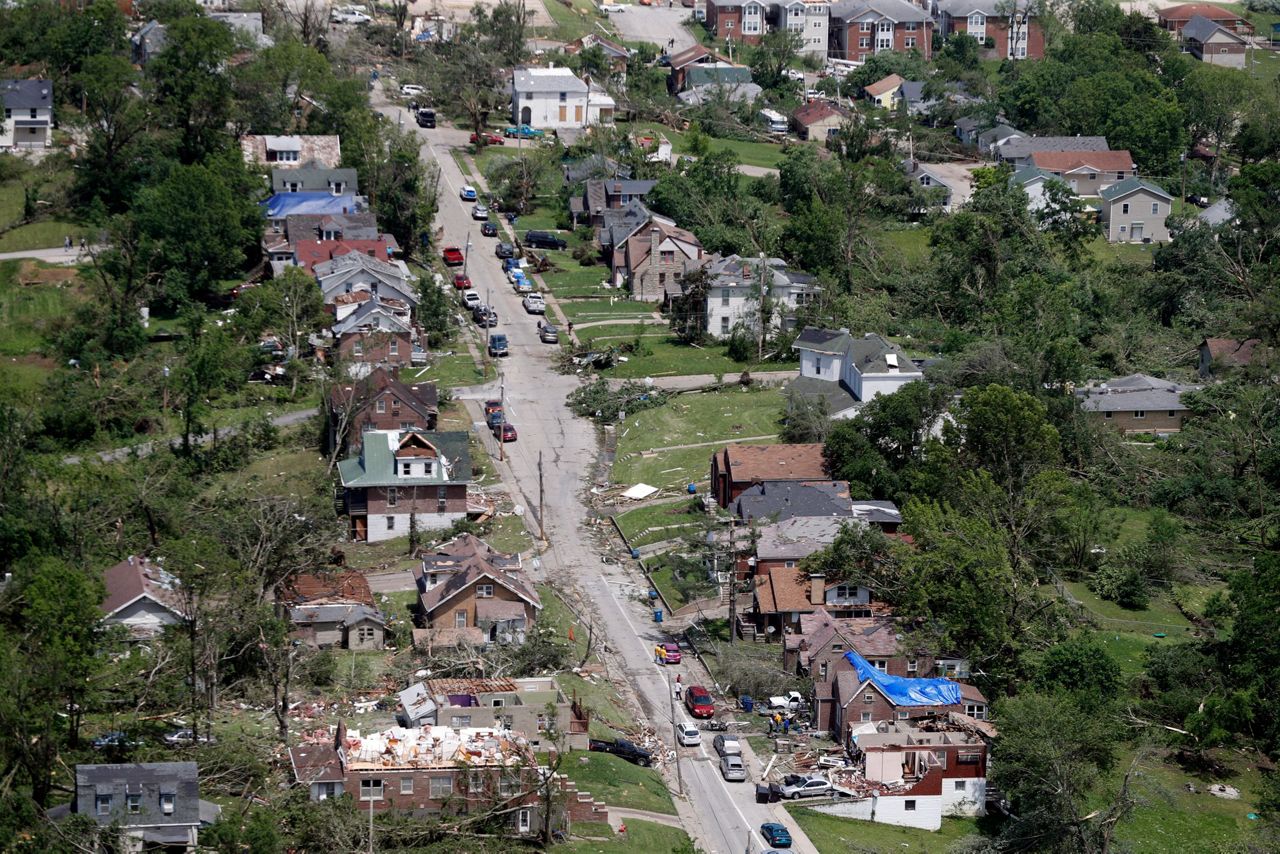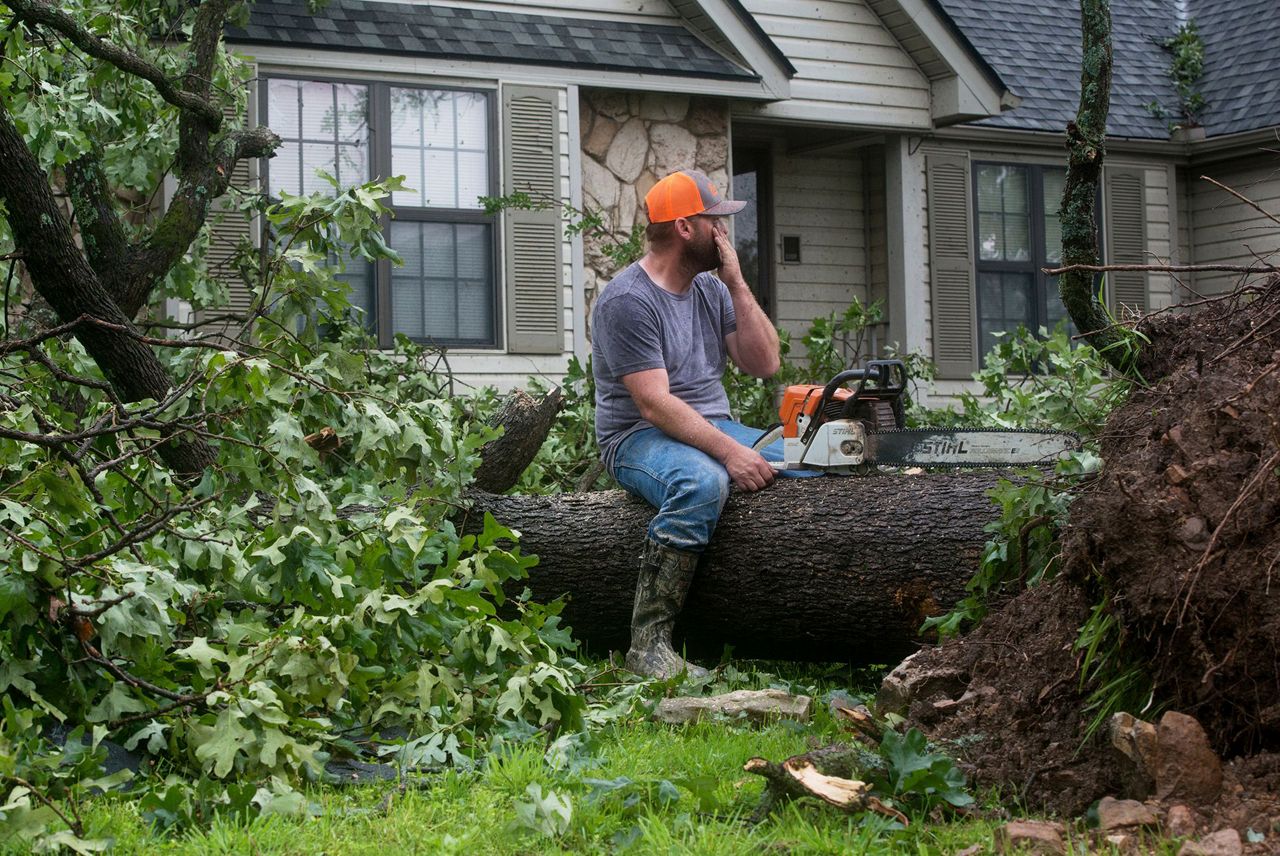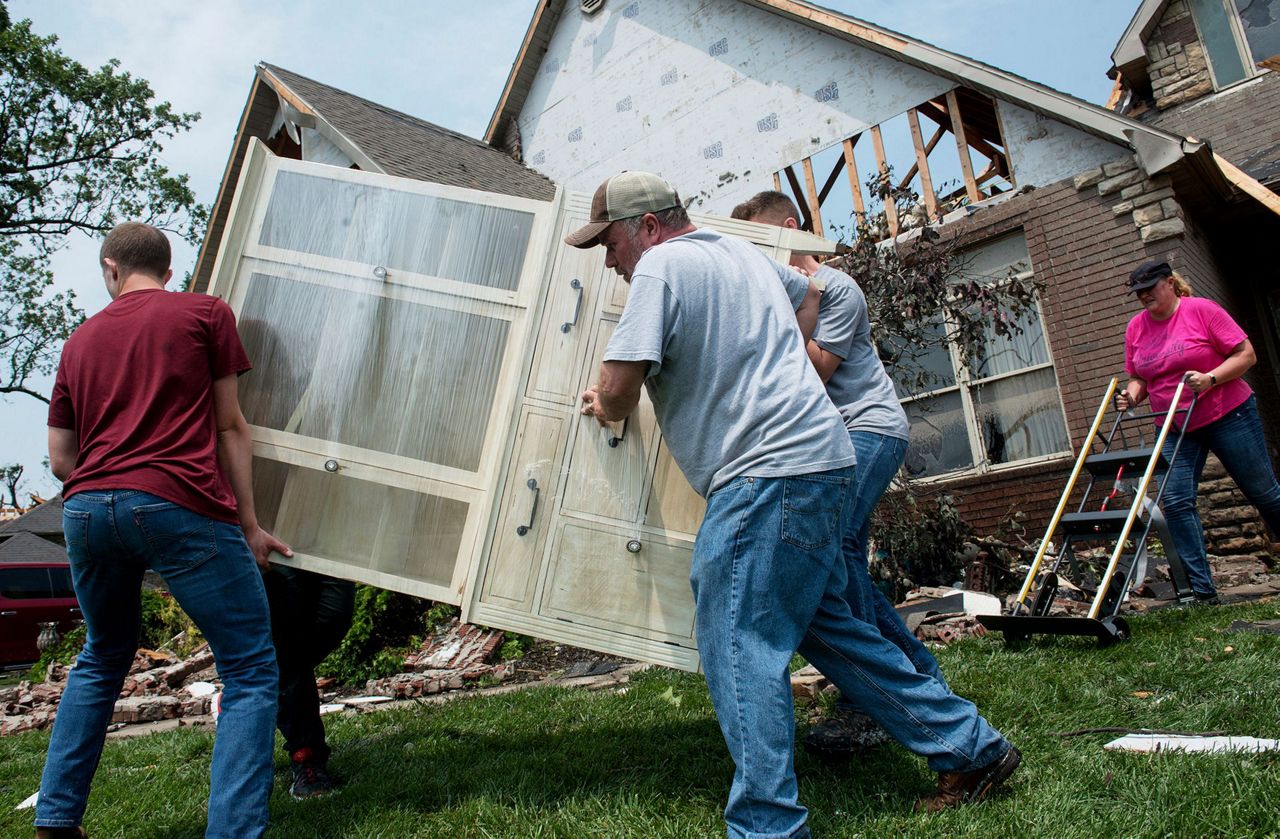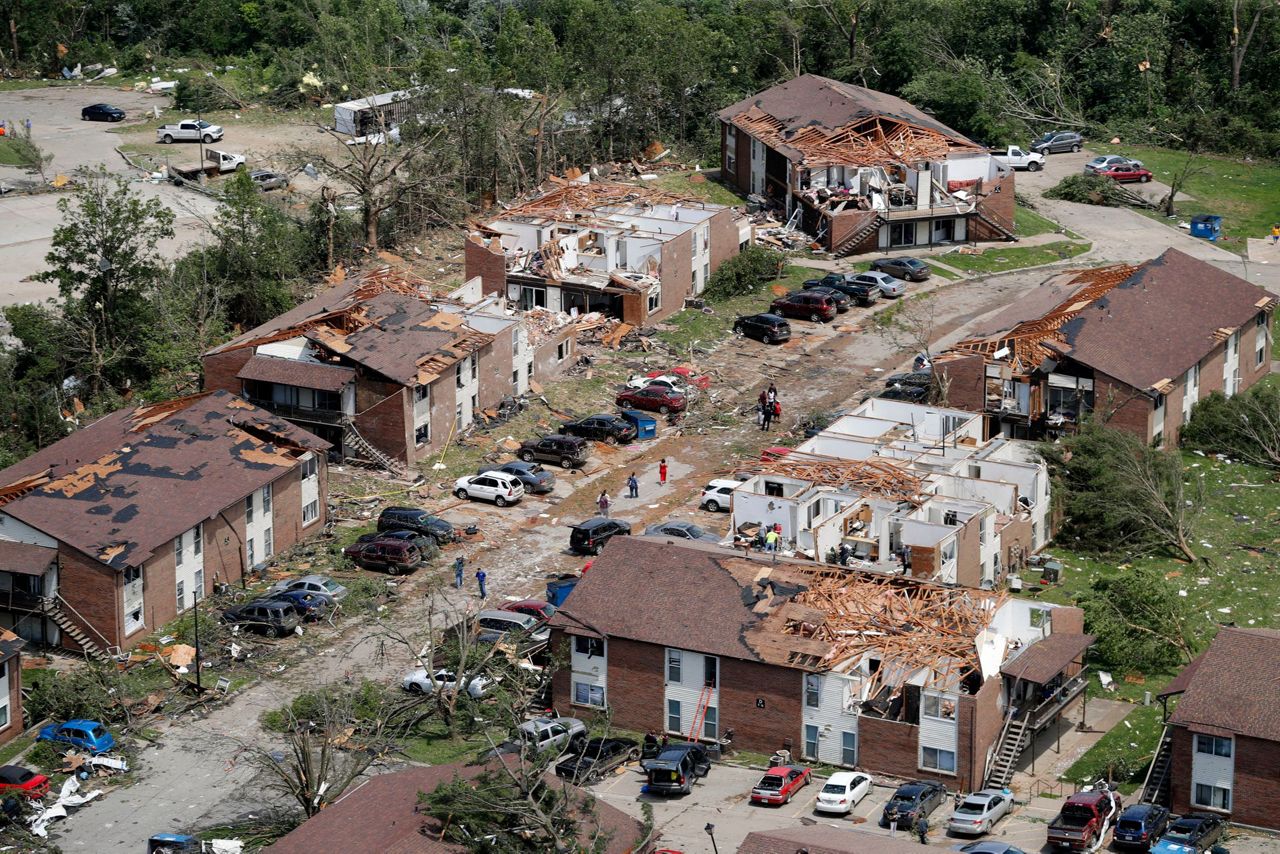JEFFERSON CITY, Mo. (AP) — Eight years to the day after a devastating tornado killed 161 people and injured more than 1,100 others in Joplin, another big twister ripped through Missouri — this time the capital of Jefferson City — but with a far different result: no deaths or serious injuries.
The two storms hit Missouri cities roughly the same size on the same day of the year, May 22. And they both ravaged residential neighborhoods and business districts. But several factors created completely different scenarios — factors that worked against Joplin and helped spare the lives of Jefferson City residents like Debra Gary, who along with her husband, mother and four kids hunkered down in the basement before emerging to find their home badly damage.
"I always tell my kids, 'Keep God first,' because God was there for us," Gary said Friday. "He kept us and our home safe when the tornado was going on."
The Jefferson City twister was a big one, an EF-3 with winds estimated at 160 mph (257 kilometers per hour). But the Joplin tornado was a rarely-seen monster, an EF-5 with winds in excess of 200 mph (320 kilometers per hour). It was on the ground for 22 miles and 38 terrifying minutes, tearing through one-third of the town.
Then there was the timing. The Joplin tornado hit on a Sunday afternoon, as people were out and about, including hundreds who had just left the high school's graduation ceremony.
"You had many more people potentially in the path, in vulnerable locations," said Bill Bunting, chief of forecast operations of the National Oceanic and Atmospheric Administration's Storm Prediction Center in Norman, Oklahoma.
The Jefferson City twister arrived in the middle of the night, which was actually a good thing, said Brian Houston, a communications professor and director of the University of Missouri's Disaster and Community Crisis Center.
"We think of nighttime tornadoes being pretty dangerous because people might be asleep and not aware of them, but one of the good things is people tend to be at home, in structures," Houston said. "It's always better to be inside somewhere when a tornado strikes, rather than being out."
The ability to find safe refuge from the storm also favored Jefferson City. Joplin sits in an area of southwestern Missouri where the soil is rocky, so basements are uncommon. In 2011, only about one in five Joplin homes had basements, which forced people to take shelter in far less secure places like bathtubs and closets. Basements are far more common in Jefferson City, which was built on rolling hills along the Missouri River.
Bunting and Houston agree that technology also was a factor that helped in Jefferson City. Smart phones are now omnipresent, and many people have alerts on their phones that warn of approaching weather danger.
Those warnings are now more precise, too. Houston said storm warnings are now more localized, meaning people "are hopefully more likely to take it seriously because you're not getting these warnings for a tornado that's on the other side of the county that might be dozens of miles away."
Radar is more advanced, too. Forecasters were warning as far back as last week that the Plains and Midwest faced a highly dangerous storm scenario. On Wednesday night, central Missouri TV stations tracked the approaching storm and sirens in Jefferson City first sounded at 11:10 p.m., which was at least 30 minutes before the first property damage was inflicted. Gov. Mike Parson credited the warning system for saving lives.
As Jefferson City residents began the long task of cleaning up, they faced additional challenges: Flooding and heat.
The Missouri River topped a levee on the north side of town, threatening the airport and a few homes and businesses, including a golf course and events center Danny Baumgartner owns.
"It's part of Mother Nature — these things happen, and you make the best of it and help each other out," Baumgartner said. "With the tornado and this going on, it's a lot of activities for a small community. But we'll all make it."
Flooding also forced the closure of some roads around the state Capitol, though the building itself sits on a bluff overlooking the river, out of harm's way. The tornado also spared the Capitol building.
Ameren Missouri crews worked in sweltering humidity with a temperature nearing 90 degrees, replacing about 200 broken power poles and re-stringing lines in Jefferson City and Eldon, another central Missouri community hit by a tornado.
Ameren Missouri division director Chip Webb said it may be late Saturday before power is fully restored in Jefferson City.
___
Salter reported from St. Louis. Associated Press video journalist Mike Householder contributed to this report.
Copyright 2019 The Associated Press. All rights reserved. This material may not be published, broadcast, rewritten or redistributed.



